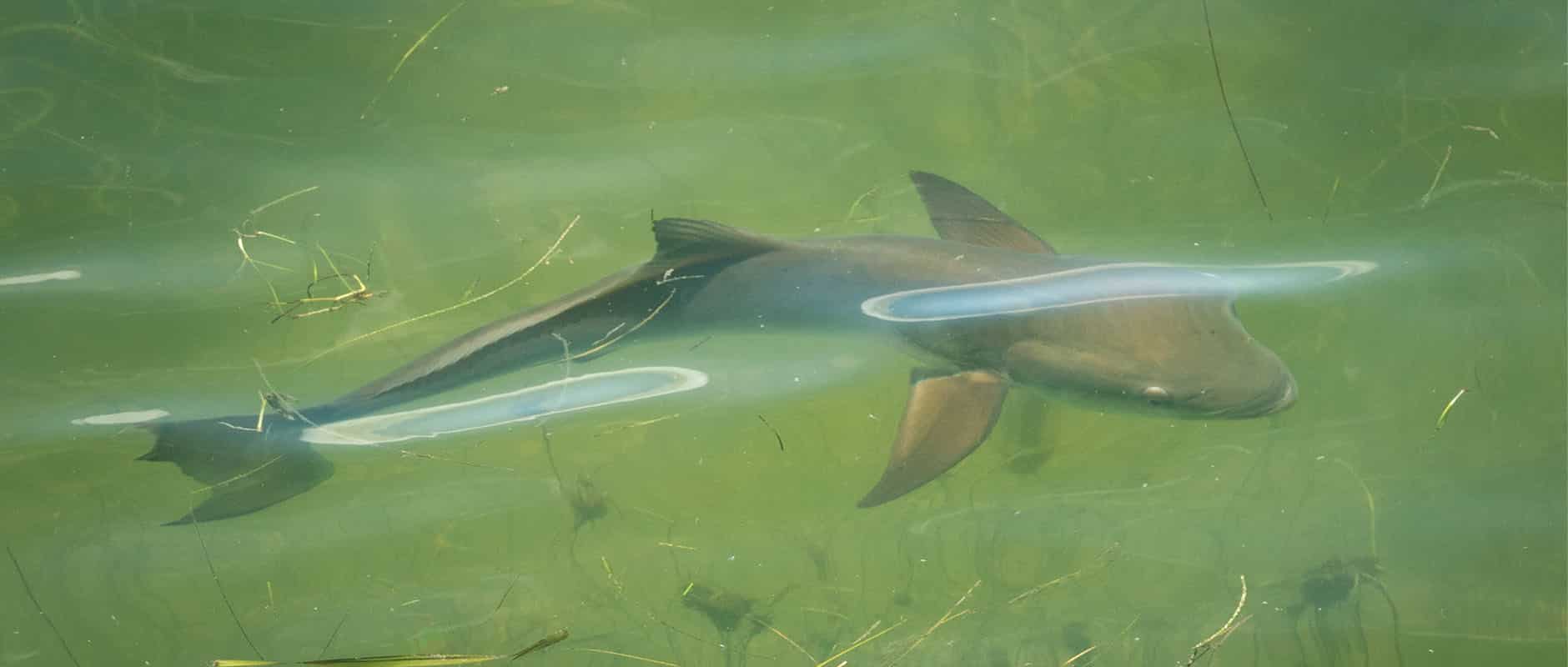- A new study shows that toxic algae blooms are poisoning bull sharks in the Indian River Lagoon and posing a risk to human health.
- The harmful algae blooms also have caused a widespread loss of seagrass and an unprecedented die-off of manatees in the area.
- Aside from environmental impacts, toxic algae bloom also has economic consequences.
Toxic algae blooms are a growing concern in many parts of the world, and the Indian River Lagoon in Florida is no exception. A recent study from the Florida Atlantic University’s Harbor Branch Oceanographic Institute, has shed new findings on the extent of the problem in this area, revealing that harmful algae blooms are poisoning bull sharks in the lagoon and posing a risk to human health as well
The study marks the first time that toxins produced by harmful algae blooms have been measured in bull sharks. The researchers measured concentrations of phycotoxins in samples collected from 50 immature (young) bull sharks captured in the Indian River Lagoon between 2018 and 2020. They used ultra-performance liquid chromatography/ tandem mass spectrometry to measure the toxins in shark gut contents, plasma (blood) and liver. The results showed that the greatest concentration of toxins was in the sharks’ stomachs, indicating the widespread impact of the blooms and the way in which the toxins are moving throughout the food web.
The harmful algae blooms in the Indian River Lagoon have had devastating consequences for the local ecosystem. Most notably, the blooms have caused a widespread loss of seagrass, leading to an unprecedented die-off of manatees. These gentle giants have been left starving as a result, with their primary source of food disappearing due to the blooms.
But the impact of the algae blooms goes far beyond this. The blooms also pose a serious threat to human health, as they can produce toxins that can cause a range of health problems. Some of the potential effects of these toxins include skin irritation, respiratory issues, and even neurological disorders. In addition to the direct health impacts, toxic algae blooms can also have economic consequences, as they can make recreational activities such as swimming and fishing unsafe and harm local businesses that rely on the tourism industry. The Indian River Lagoon itself is also an economic engine, generating more than $7.6 billion per year for the state of Florida.
The situation in the Indian River Lagoon highlights the urgent need for action to address the issue of toxic algae blooms. These blooms are often caused by excess nutrients entering the water, which can come from a variety of sources such as sewage, agricultural runoff, and urban development. In order to effectively combat the problem, it is essential to identify and address these sources of excess nutrients, as well as implement measures to prevent them from entering the water in the first place.
The situation in the Indian River Lagoon serves as a stark reminder of the importance of protecting our waterways and the creatures that call them home. By taking action to address the issue of toxic algae blooms, and choosing an environmentally friendly solution like ultrasound, we can not only safeguard the health of marine life but also protect our own health and future generations.
